1 Introduction
In recent years, electronic products that use batteries as power sources have been widely used, and designers urgently require low-voltage analog circuits to reduce power consumption. Low-voltage, low-power, low-noise analog circuit design technology is becoming a research hotspot. From the point of view of energy saving, low power consumption is not only the demand for battery-powered portable devices, but it is also urgently needed for large systems that use commercial power. It can not only extend the use time of the equipment, but also delay the aging of the equipment. As the most basic unit in integrated circuits, operational amplifiers are well known for their importance. In low-voltage operational amplifiers, the dynamic range of the signal is reduced due to the reduction of the power supply voltage. At the same time, the amplitude of the noise signal is relatively increased, and the signal-to-noise ratio of the amplifier is reduced. In order to solve these design problems, Diao Microelectronics has specially developed several low-power and low-noise op amps to meet this market demand.
2. Background
With the rapid development of the medical electronic equipment industry, mobile handheld medical electronic equipment for personal care is also developing rapidly. Whether it is a handheld defibrillator or a dynamic blood glucose monitor, designing such products is not an easy task. Selecting appropriate components to meet the requirements of design specifications, reducing costs as much as possible, ensuring the power of the design scheme, paying special attention to the actual size of the product, etc. are all issues that must be considered in the product design process. Along with the improvement of Chinese people's security awareness, smoke detection equipment has entered thousands of households, placing higher requirements on the design of fire protection products with low power consumption (long battery life) and high sensitivity and reliability.

Block diagram of blood pressure monitor
Whether it is temperature, pulse, blood glucose readings, or other biosensors, implementing appropriate signal amplification and conditioning links is the most important issue. In the analog front-end circuit, the operational amplifier is the most critical unit. In this circuit, the operational amplifier with low noise, high precision, low power consumption, and low bias current is generally selected. The first stage of the signal chain generally uses a high common-mode rejection ratio, low bias current (especially for infrared tube sensors), and low-noise op amps; the second stage will use low-power, high-precision, low-noise operational amplifiers. The next step in the signal chain is a good delta-sigma or successive approximation analog-to-digital converter (ADC). Features such as single-cycle filter settings and on-demand conversion simplifies ADC design requirements, improves conversion speed, and provides a larger source impedance. With proper layout and component selection, a clean, accurate and meaningful signal can be input into the system microprocessor / DSP.
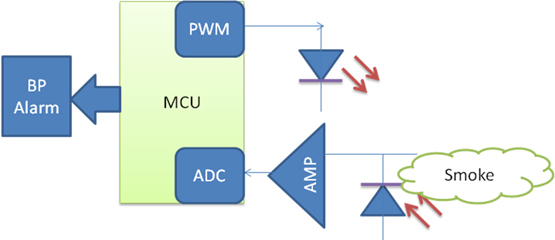
Smoke structure block diagram
The alarm composed of smoke sensor can report fire alarm in time. In the smoke sensor, a semiconductor material that is particularly sensitive to smoke, such as tin oxide and zinc oxide, is installed, so they are also called gas-sensitive materials. In the environment with smoke, when the concentration of smoke reaches a certain value, the resistance value inside the gas-sensitive material will drop rapidly. Once the smoke disappears, their resistance will return to normal. Another method of smoke detection is to use the principle that infrared light is blocked by smoke and causes an infrared receiver to measure the current and alarm. The photoelectric method is divided into forward scattering and backward scattering detection methods. The sensor is installed in the optical labyrinth. When there is no smoke, the sensor cannot receive or only receives a very weak optical signal. After being amplified by the amplifier, the logic judgment circuit does not perform alarm processing. When smoke enters the maze, the light irradiates the smoke particles and generates scattering. The sensor receives a relatively strong optical signal. After amplification, the logic alarm circuit sends out an alarm signal. In these applications, operational amplifiers are the key devices, requiring ultra-low power consumption, low bias current, and low noise.
3. Application of DIO2051 / 2052
In order to meet the needs of these markets, Dior Microelectronics has specially developed a DIO2051 / 2052 chip to meet customer needs. DIO2052 / DIO2051 has a wide common-mode input range and a wide output voltage swing. The power supply operating voltage is from 2.1V to 5.5V, and the temperature operating range is from -40 ° C to 125 ° C.
The bandwidth of DIO2052 / DIO2051 is 500kHz, and the static power consumption of each channel is 16uA. With CMOS input, a very low input bias current (0.5pA) can be obtained. When the power supply voltage is 5V and the resistance load is 5K ohms, the output range can reach 0.1 to 4.9V, as shown in Table 1. High CMRR and PSRR are shown in Table 2. Low static power consumption, as shown in Table 3. At the same time, DIO2052 / DIO2051 has a low offset (less than 1mV), low input noise, greater than> 10kHz, 20nV / sqrt (Hz), as shown in Table 4.

Table 1 Input and output curves under different resistive load conditions

Table 2 PSRR and CMRR
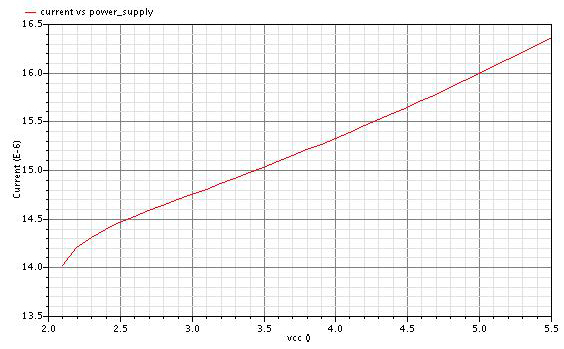
Table 3 Variation curve of static power consumption with power supply voltage
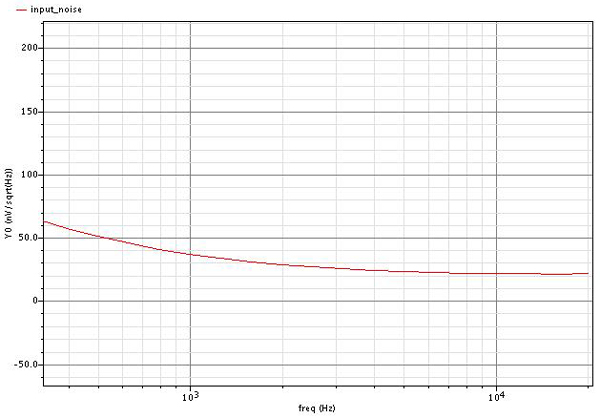
Table 4 Equivalent input noise
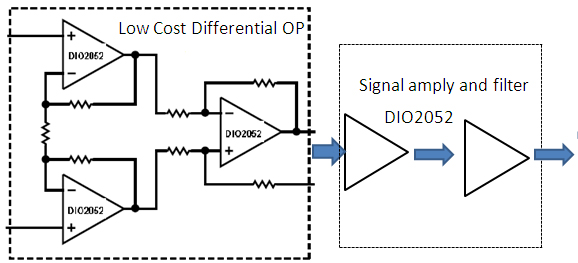
The application of DIO2052 in the oximeter
Dior Microelectronics' DIO2052 plays a very critical role in oximeter applications. The first stage uses three op amps to build a fully differential mode as the signal input stage, providing a high common-mode rejection ratio, a wide signal dynamic range, and the most important thing is to save expensive instrumentation op amps. The second stage uses two op amps for signal amplification and active filter design, with good signal-to-noise ratio and low offset. In the application of oximeter, customers have achieved a very high cost performance, improved the competitiveness of products and accelerated time to market.
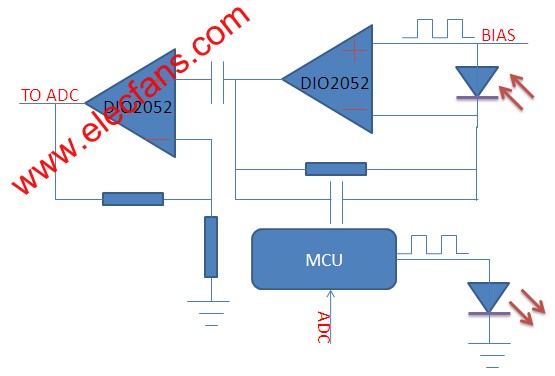
Application Example of Photoelectric Smoke Detector DIO2052
In the design of this photoelectric smoke sensor, the DIO2052 used by the designer is very in line with the design requirements. DIO2052 has a very low bias current (<1pA), which can ensure that the dark current is much smaller than the infrared tube, which improves the reliability of the sensor; DIO2052 has extremely low power consumption (<18uA), making simple battery-powered smoke detection The device can work for a long time, even if the smoke of the network is connected, more terminals can be connected to the fire control center; DIO2052's good common mode rejection ratio, low noise and other characteristics ensure good circuit performance and product quality Reliability meets the design concept of fire protection products.
4. Summary
As people pay more and more attention to their own health status and safety of living environment, portable medical products and fire alarm products will inevitably develop rapidly. Low-noise, high-precision, low-power operational amplifiers will be widely adopted in terminal design.
Hair Twist Sponge/Magic Hair Twist Sponge
Product Description:
1. 100% brand new and high quality
2. Twist hair brush sponge3. Like nudred or magic twist brush
4. Great way to get dreads and twists!
5. Save money and time by using this great new styling product.
6. Material: EVA + Sponge

Hair Twist Sponge,Hair Curly Sponge,Men Hair Curly Sponge,Women Hair Curly Sponge
Shenzhen Greater Industry Co., Ltd. , https://www.szgreater.net